Amanda Nicholls looks at which products are essential for convenience shoppers, and how to make the best of these basket basics
Basket basics are the mainstay of convenience stores. And knowing exactly how many core items will sell each week would be a godsend for retailers. But predicting this isn't easy. Market analyst Jonathan Banks from Nielsen says that predicting fastest-selling products for individual stores is a tough task. "At the top level, where you are looking at 1,000 stores, it's easier to predict what's going to happen. But on an individual store basis, which is where it counts, it's surprising how much the numbers vary from day to day."
However, some trends do emerge. Market analysts HIM spoke to more than 2,000 customers in its Convenience Tracking Programme (CTP) autumn 2007. After soft drinks and newspapers, 24% bought bakery items including bread; 21% purchased milk; and 12% picked up fresh fruit and vegetables. Also in the top 10 were household items such as toilet roll, cleaning materials and washing products at 6%, and grocery items including rice, pasta and sauces at 10%.
Nielsen's Homescan, which monitors 15,000 households and a further 5,000 individuals, had similar results. Bread and milk took up the top two positions, followed by fresh meat at number three and cooking products at number four. Fresh fruit and vegetables, soft drinks, fresh fish and personal care also feature in the top 10.
Mike Eastlea from Budgens in Newbury, Berkshire, separates his core selling ranges into times of the day. "In the morning, we get the impression most of our sales are for items that will be consumed in the next couple of hours, so milk and bread feature heavily," he says. "We get a large lunchtime trade any time between 10am and 1pm, where we sell a lot of sandwiches and drinks, coffee and biscuits. Then there is a teatime rush which tends to focus on more of the non-food items such as loo rolls and pet food, and a lot of meals for the evening."
Trying to track and understand the convenience customer's shopping habits is important business for manufacturers. Earlier this year two major reports were released covering the top basket basic items: milk and bread.
The Bakery Review 2007 from Warburtons found that consumers are shopping more frequently, but spending less per visit. The report says 'convenience' is still the most important trend. Good news for c-stores, but Warburtons warns retailers that this is now expected as a given and should be combined with either health or indulgence.
But bread still remains a hero for c-store retailers. According the Nielsen, everyday bread accounts for 61% of all total sliced bread sales, making the category a major pull for customers into a store.
Allied Bakeries has also been researching the convenience sector to help make bread easier for shoppers to buy and easier for retailers to sell. It believes fulfilling five key drivers of growth could add £80m to the overall bakery category for the convenience channel. These are: in-store availability; impulse buying; healthier eating; premium offering; and shopper satisfaction.
Second on HIM's list of basket basics was milk, and a recent report by Dairy Crest found that dairy products are consumed by 99% of all UK households, spending an average of more than £300 a year. The Dairy Crest Dairy Report 2007 found that the category is worth £7.6bn, with milk representing the biggest chunk at £2.6bn; chilled yoghurts and desserts at £2bn; cheese at £1.9bn; butters and spreads at £855m; cream at £199m; and fresh flavoured milk at £38m.
Senior controller for chilled foods at Nisa, Nick Slater, says that the trend is towards skimmed and away from whole milk. He adds that the provenance of milk will be a focus for Nisa in 2008.
Mylvaganam Arulkumar (Arul), who owns two Spar stores in Islington, says that 2ltr milk is one of his fastest-selling items, but the competition for the cheapest milk price in the area is fierce.
Arul says: "We are surrounded by Tesco stores and smaller shops, so we have to compete on price. Customers have queried our milk price because it's almost 20p more than other smaller shops in the area. But we had to explain that we are a larger company and have bigger costs on carriage and refrigeration, but that we can guarantee quality."
Richard Tolley, group marketing development director at Dairy Crest, says consumers see dairy as a super-category, therefore retailers should use clear signage to make it obvious they are in the dairy aisle. "Dairy should be sold separately from other merchandise, for example, juice should not be in the dairy section, while flavoured milk should always be adjacent to fresh milk," he says.
Milk isn't the only dairy category under pressure. According to Mintel, the cheese market - worth £1.9m in 2007 - has been flat over the past couple of years. Market analysts say downward pressure on price has fostered fierce competition and heavy discounting, particularly on branded Cheddars. However, retailers should take heart as growth has been seen in some sectors, such as mature Cheddars, regional cheeses and 'healthy' varieties.
Slater says that although 50% of cheese sales in Nisa are still in Cheddar, this is down from 60% five years ago. "Even within Cheddar we've seen a switch by consumers as they trade up to higher maturity Cheddars. We are also seeing growth in continental/fancy cheeses. Lines such as brie, camembert and feta have all seen double-digit growth in the past 12 months, and Italian cheeses (such
as parmesan, gorgonzola and mascarpone) have grown even faster."
After the morning rush for milk and bread, snacking is a key driver for customers into convenience stores. As such, the UK biscuit market is worth £1.9bn, with McVitie's Digestives the UK's number-one everyday biscuit brand and McVitie's Chocolate Digestives the top everyday treat brand.
UBUK advises retailers to arrange the biscuit fixture by dedicating 30% to everyday treats such as Jaffa Cakes, 10% for special treats, 20% for everyday biscuits, 20% for chocolate biscuit bars, and 10% to healthier snacks.
According to Mike Eastlea, his evening sales are dominated by customers looking for a quick and easy meal option, so rice, pasta and cooking sauces sell well.
Napolina has become the biggest brand in the dry pasta sector, following what Mintel describes as a 'meteoric' rise, thought to be associated with the brand's presence in other Italian sectors including olive oil and tomatoes.
Remmelt Jongkind, marketing director for Napolina, says that sales in convenience stores depend heavily on offering the right product for the store and its target customers. However, he advises stocking 400g single cans of tomatoes, 142g tubes of tomato puree, 250ml olive oil bottles and 500g bags of pasta to create an ideal mix of products to appeal to both top-up and impulse shoppers.
Uncle Ben's currently represents 53.7% of rice sales, with long grain express rice remaining the fastest-selling rice product within convenience stores. Overall, according to IRI Grocery Outlets Value Sales, 89% of microwaveable rice sales come from convenience. Mars Foods says the 250g pouches work well at tempting impulse buying and suit time-starved consumers. Basmati and egg- fried are the other good sellers.
Cooking sauces are also performing well, with eight out of 10 households buying into the category, according to ACNielsen. Dolmio Bolognese Original 500g remains the top-selling Italian cooking sauce sku within the convenience sector.
Dan Sanders, category insight manager for Dolmio, says: "Offering choice is very important. With premium ranges, microwaveable options, organic and seasonal varieties alongside the standard recipe offerings, retailers will be able to drive trial and generate sales."
But basket basics also fall outside the food category. Both Arul and Mike say that toilet roll, cleaning products and pet food are key items for their regular shoppers. However, Unilever range and merchandising executive Liz Noor says there can be confusion about what to stock.
"The household category has seen extensive innovation over recent years," she says. "This has created sales opportunities, but also uncertainty about which products to stock and how to merchandise, especially when space is tight."
Once again, helping consumers find what they want quickly and easily is a target for retailers. Unilever's Partners for Growth found that household products need to be easier to find and should be divided into areas of the home. It also advises devoting more space to the best sellers, using branded products to attract customers to the fixture, placing the bulk at the bottom, and merchandising for a bigger spend by placing tools such as cloths and sponges next to items they will be used with.
Arul says that keeping prices low on the core basic items is essential, as shoppers will compare prices with the supermarkets'. Nielsen's Banks agrees: "There's plenty of evidence that people will pay a premium to shop locally and have the convenience of having a store open until 11pm. But I believe that theory is misreading what's happening. People are paying a premium, not because they want to, but because they have to. Therefore, if an Aldi or a Lidl opens up nearby with more product ranges and lower prices on essential items, then that begins to be very tough competition for independent retailers."
However, Mike believes price is very low in his customers' priorities. "Availability and service are the two most important things for our customers," he says. "We have to make sure we have the products they want and have to serve them as quickly and efficiently as possible."
Therefore, while Arul offers a range of promotions on his core ranges, Mike focuses offers on the periphery and tertiary lines. "For the items that customers are going to buy anyway, rather than discount we use occasional offers to encourage people to trade up, such as 'two for one' or 'two for £5'," he says.
Mike says that making sure the core items are available at all times of the day is the primary concern for a successful convenience store. "I measure the availability of our key lines at least three different times a day," he says. "My store shouldn't just look good at eight in the morning. It should also look great at two in the afternoon and eight at night."
Basket basics are the mainstay of convenience stores. And knowing exactly how many core items will sell each week would be a godsend for retailers. But predicting this isn't easy. Market analyst Jonathan Banks from Nielsen says that predicting fastest-selling products for individual stores is a tough task. "At the top level, where you are looking at 1,000 stores, it's easier to predict what's going to happen. But on an individual store basis, which is where it counts, it's surprising how much the numbers vary from day to day."
However, some trends do emerge. Market analysts HIM spoke to more than 2,000 customers in its Convenience Tracking Programme (CTP) autumn 2007. After soft drinks and newspapers, 24% bought bakery items including bread; 21% purchased milk; and 12% picked up fresh fruit and vegetables. Also in the top 10 were household items such as toilet roll, cleaning materials and washing products at 6%, and grocery items including rice, pasta and sauces at 10%.
Nielsen's Homescan, which monitors 15,000 households and a further 5,000 individuals, had similar results. Bread and milk took up the top two positions, followed by fresh meat at number three and cooking products at number four. Fresh fruit and vegetables, soft drinks, fresh fish and personal care also feature in the top 10.
Mike Eastlea from Budgens in Newbury, Berkshire, separates his core selling ranges into times of the day. "In the morning, we get the impression most of our sales are for items that will be consumed in the next couple of hours, so milk and bread feature heavily," he says. "We get a large lunchtime trade any time between 10am and 1pm, where we sell a lot of sandwiches and drinks, coffee and biscuits. Then there is a teatime rush which tends to focus on more of the non-food items such as loo rolls and pet food, and a lot of meals for the evening."
Bringing in the dough
Trying to track and understand the convenience customer's shopping habits is important business for manufacturers. Earlier this year two major reports were released covering the top basket basic items: milk and bread.
The Bakery Review 2007 from Warburtons found that consumers are shopping more frequently, but spending less per visit. The report says 'convenience' is still the most important trend. Good news for c-stores, but Warburtons warns retailers that this is now expected as a given and should be combined with either health or indulgence.
But bread still remains a hero for c-store retailers. According the Nielsen, everyday bread accounts for 61% of all total sliced bread sales, making the category a major pull for customers into a store.
Allied Bakeries has also been researching the convenience sector to help make bread easier for shoppers to buy and easier for retailers to sell. It believes fulfilling five key drivers of growth could add £80m to the overall bakery category for the convenience channel. These are: in-store availability; impulse buying; healthier eating; premium offering; and shopper satisfaction.
Milking sales
Second on HIM's list of basket basics was milk, and a recent report by Dairy Crest found that dairy products are consumed by 99% of all UK households, spending an average of more than £300 a year. The Dairy Crest Dairy Report 2007 found that the category is worth £7.6bn, with milk representing the biggest chunk at £2.6bn; chilled yoghurts and desserts at £2bn; cheese at £1.9bn; butters and spreads at £855m; cream at £199m; and fresh flavoured milk at £38m.
Senior controller for chilled foods at Nisa, Nick Slater, says that the trend is towards skimmed and away from whole milk. He adds that the provenance of milk will be a focus for Nisa in 2008.
Mylvaganam Arulkumar (Arul), who owns two Spar stores in Islington, says that 2ltr milk is one of his fastest-selling items, but the competition for the cheapest milk price in the area is fierce.
Arul says: "We are surrounded by Tesco stores and smaller shops, so we have to compete on price. Customers have queried our milk price because it's almost 20p more than other smaller shops in the area. But we had to explain that we are a larger company and have bigger costs on carriage and refrigeration, but that we can guarantee quality."
Richard Tolley, group marketing development director at Dairy Crest, says consumers see dairy as a super-category, therefore retailers should use clear signage to make it obvious they are in the dairy aisle. "Dairy should be sold separately from other merchandise, for example, juice should not be in the dairy section, while flavoured milk should always be adjacent to fresh milk," he says.
Milk isn't the only dairy category under pressure. According to Mintel, the cheese market - worth £1.9m in 2007 - has been flat over the past couple of years. Market analysts say downward pressure on price has fostered fierce competition and heavy discounting, particularly on branded Cheddars. However, retailers should take heart as growth has been seen in some sectors, such as mature Cheddars, regional cheeses and 'healthy' varieties.
Slater says that although 50% of cheese sales in Nisa are still in Cheddar, this is down from 60% five years ago. "Even within Cheddar we've seen a switch by consumers as they trade up to higher maturity Cheddars. We are also seeing growth in continental/fancy cheeses. Lines such as brie, camembert and feta have all seen double-digit growth in the past 12 months, and Italian cheeses (such
as parmesan, gorgonzola and mascarpone) have grown even faster."
Snack attack
After the morning rush for milk and bread, snacking is a key driver for customers into convenience stores. As such, the UK biscuit market is worth £1.9bn, with McVitie's Digestives the UK's number-one everyday biscuit brand and McVitie's Chocolate Digestives the top everyday treat brand.
UBUK advises retailers to arrange the biscuit fixture by dedicating 30% to everyday treats such as Jaffa Cakes, 10% for special treats, 20% for everyday biscuits, 20% for chocolate biscuit bars, and 10% to healthier snacks.
Cooking up
According to Mike Eastlea, his evening sales are dominated by customers looking for a quick and easy meal option, so rice, pasta and cooking sauces sell well.
Napolina has become the biggest brand in the dry pasta sector, following what Mintel describes as a 'meteoric' rise, thought to be associated with the brand's presence in other Italian sectors including olive oil and tomatoes.
Remmelt Jongkind, marketing director for Napolina, says that sales in convenience stores depend heavily on offering the right product for the store and its target customers. However, he advises stocking 400g single cans of tomatoes, 142g tubes of tomato puree, 250ml olive oil bottles and 500g bags of pasta to create an ideal mix of products to appeal to both top-up and impulse shoppers.
Uncle Ben's currently represents 53.7% of rice sales, with long grain express rice remaining the fastest-selling rice product within convenience stores. Overall, according to IRI Grocery Outlets Value Sales, 89% of microwaveable rice sales come from convenience. Mars Foods says the 250g pouches work well at tempting impulse buying and suit time-starved consumers. Basmati and egg- fried are the other good sellers.
Cooking sauces are also performing well, with eight out of 10 households buying into the category, according to ACNielsen. Dolmio Bolognese Original 500g remains the top-selling Italian cooking sauce sku within the convenience sector.
Dan Sanders, category insight manager for Dolmio, says: "Offering choice is very important. With premium ranges, microwaveable options, organic and seasonal varieties alongside the standard recipe offerings, retailers will be able to drive trial and generate sales."
But basket basics also fall outside the food category. Both Arul and Mike say that toilet roll, cleaning products and pet food are key items for their regular shoppers. However, Unilever range and merchandising executive Liz Noor says there can be confusion about what to stock.
"The household category has seen extensive innovation over recent years," she says. "This has created sales opportunities, but also uncertainty about which products to stock and how to merchandise, especially when space is tight."
Once again, helping consumers find what they want quickly and easily is a target for retailers. Unilever's Partners for Growth found that household products need to be easier to find and should be divided into areas of the home. It also advises devoting more space to the best sellers, using branded products to attract customers to the fixture, placing the bulk at the bottom, and merchandising for a bigger spend by placing tools such as cloths and sponges next to items they will be used with.
Price wars
Arul says that keeping prices low on the core basic items is essential, as shoppers will compare prices with the supermarkets'. Nielsen's Banks agrees: "There's plenty of evidence that people will pay a premium to shop locally and have the convenience of having a store open until 11pm. But I believe that theory is misreading what's happening. People are paying a premium, not because they want to, but because they have to. Therefore, if an Aldi or a Lidl opens up nearby with more product ranges and lower prices on essential items, then that begins to be very tough competition for independent retailers."
However, Mike believes price is very low in his customers' priorities. "Availability and service are the two most important things for our customers," he says. "We have to make sure we have the products they want and have to serve them as quickly and efficiently as possible."
Therefore, while Arul offers a range of promotions on his core ranges, Mike focuses offers on the periphery and tertiary lines. "For the items that customers are going to buy anyway, rather than discount we use occasional offers to encourage people to trade up, such as 'two for one' or 'two for £5'," he says.
Mike says that making sure the core items are available at all times of the day is the primary concern for a successful convenience store. "I measure the availability of our key lines at least three different times a day," he says. "My store shouldn't just look good at eight in the morning. It should also look great at two in the afternoon and eight at night."

















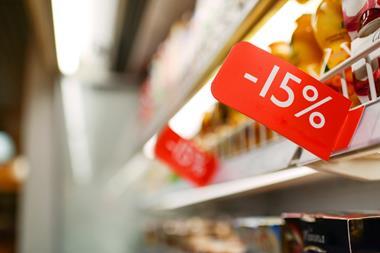
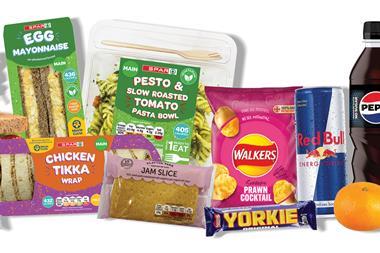


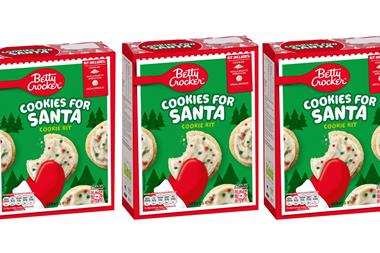
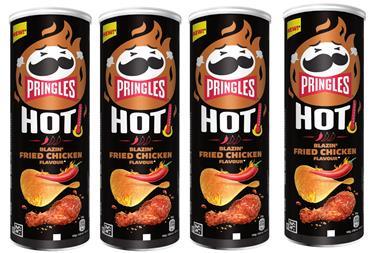



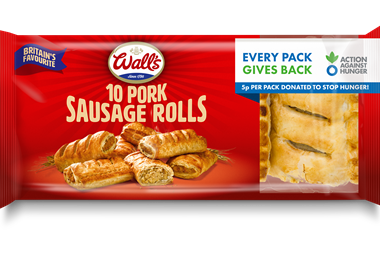

No comments yet